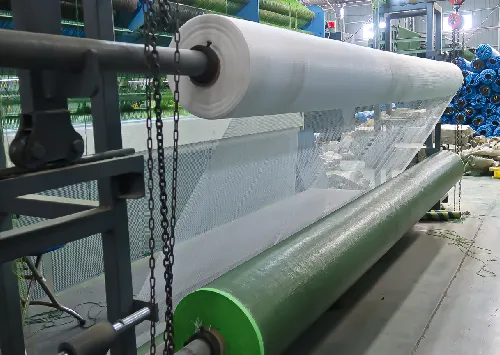
- Afrikaans
- Arabic
- Belarusian
- Bengali
- Czech
- Danish
- Dutch
- English
- Esperanto
- Estonian
- Finnish
- French
- German
- Greek
- Hindi
- Hungarian
- Icelandic
- Indonesian
- irish
- Italian
- Japanese
- kazakh
- Rwandese
- Korean
- Kyrgyz
- Lao
- Latin
- Latvian
- Malay
- Mongolian
- Myanmar
- Norwegian
- Persian
- Polish
- Portuguese
- Romanian
- Russian
- Serbian
- Spanish
- Swedish
- Tagalog
- Tajik
- Thai
- Turkish
- Turkmen
- Ukrainian
- Urdu
- Uighur
- Uzbek
- Vietnamese
artificial turf and dogs
Dec . 21, 2024 14:53 Back to list
The Pros and Cons of Artificial Turf for Dogs
As pet ownership continues to rise, pet owners are constantly searching for ways to create a safe and comfortable environment for their furry friends. One option that has gained popularity in recent years is artificial turf. Although it presents several advantages, it's important to weigh these against potential drawbacks, especially for dog owners.
The Benefits of Artificial Turf
1. Durability and Longevity Artificial turf is designed to withstand heavy foot traffic, making it an ideal choice for households with dogs that love to run and play. Unlike natural grass, which can become patchy and worn from constant use, artificial turf maintains its appearance and functionality for many years, often lasting a decade or longer.
2. Low Maintenance One of the biggest selling points of artificial turf is the reduced maintenance it requires compared to traditional lawns. There’s no need for mowing, watering, or fertilizing. This saves both time and money, allowing pet owners to spend more quality time with their dogs rather than tending to lawn care chores.
3. Cleanliness Artificial turf is easier to clean than natural grass. Dog waste can be easily picked up, and the turf can be rinsed off with water to remove any lingering odors. Furthermore, many artificial turf products come equipped with drainage systems that allow liquids to flow through, helping to prevent any unpleasant accumulation.
4. No Pesticides or Herbicides For pet owners concerned about their dogs’ health, artificial turf is an appealing option. It eliminates the need for chemicals typically used on natural lawns. This ensures a safer environment where dogs can play without the risk of exposure to harmful substances.
5. Consistent Surface Artificial turf provides a flat and even surface, which reduces the risk of injuries that can occur on uneven natural grass. This is particularly beneficial for older dogs or those recovering from surgery, as it minimizes the chances of slips or falls.
artificial turf and dogs

Drawbacks of Artificial Turf
1. Heat Retention One notable disadvantage of artificial turf is its tendency to retain heat. On hot days, the surface can become significantly warmer than natural grass, potentially leading to discomfort for dogs. Owners should be mindful of this and ensure their pets stay hydrated and take breaks in shaded areas.
2. Lack of Natural Feel Some dogs may prefer the texture of natural grass. The synthetic nature of artificial turf may not appeal to every pet, and some dogs might initially resist using it, especially if they’re accustomed to a traditional yard.
3. Potential Allergies and Sensitivities While artificial turf eliminates the need for pesticides, some dogs may still have sensitivities to synthetic materials, which could lead to skin irritations or allergies. It is important for pet owners to observe how their dogs react when first introduced to the new surface.
4. Cost and Installation The initial investment for artificial turf can be considerable, especially for larger yards. While it may save money in the long run through reduced maintenance, the upfront cost can be a barrier for some pet owners. Additionally, proper installation is crucial to avoid issues like water pooling or uneven surfaces.
5. Odor Management While artificial turf is easier to clean, if not maintained properly, odors from urine or feces can become trapped. Using special cleaning solutions designed for synthetic surfaces can help mitigate this issue, but it requires an ongoing commitment.
Conclusion
Artificial turf presents a viable alternative to natural grass for dog owners seeking a low-maintenance, durable, and safe play area for their pets. However, potential challenges such as heat retention, the lack of a natural feel, and initial costs should be carefully considered. With proper maintenance and attention to your dog’s needs, artificial turf can provide a beneficial environment for both pets and their owners. Ultimately, the decision will depend on individual circumstances and the specific preferences of each pet. Before making the switch, it might be wise for owners to observe their dogs' reactions to artificial surfaces in local parks or pet-friendly areas.
-
The Benefits of Artificial Turf for Indoors
NewsJul.15,2025
-
How Artificial Grass Suppliers Ensure Quality Products
NewsJul.15,2025
-
Artificial Grass and Pets: A Space for Relaxation
NewsJul.08,2025
-
Balcony & Outdoor Decoration with Artificial Grass
NewsJul.08,2025
-
Best Indoor Artificial Grass for Home
NewsJul.07,2025
-
Best Pet Turf for Dogs: Safe & Durable Artificial Grass Options
NewsJul.07,2025
Products categories









